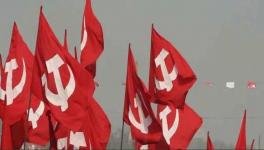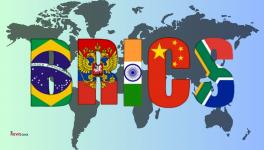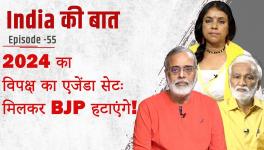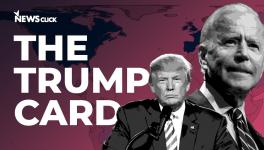Sovereignty Makes an Entry
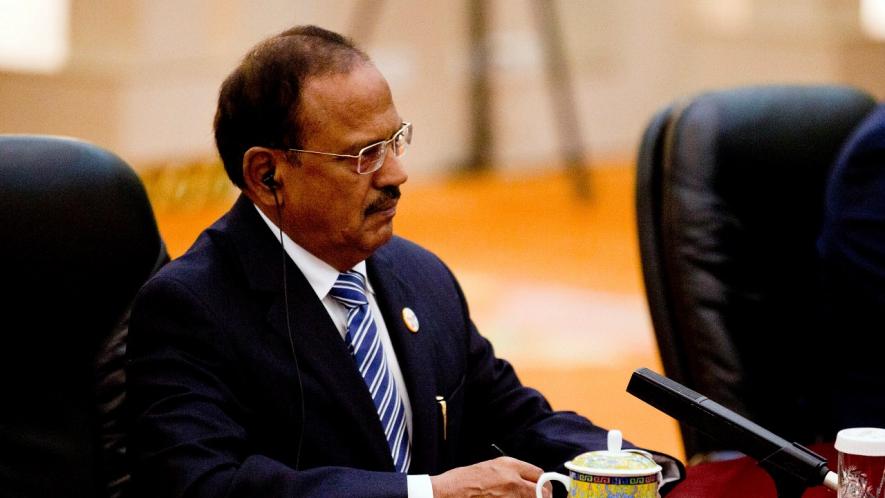
‘Sovereignty’ appears to be the new buzzword for both the prime minister and the national security advisor – the two most powerful persons in India – who have invoked it within a span of a few days. The PM said, “When our sovereignty is challenged, we will hit back.” The NSA, however, invoked it in the context of Jammu and Kashmir to argue against its separate constitution, and claimed that sovereignty cannot be “diluted and ill-defined”. While India “hitting back” when “challenged” makes for a good rhetoric (if indeed only hitting back is against those far weaker than India), in the latter case, the argument provides a fig leaf for assimilation, a coercive project in itself, riding roughshod over 96 per cent of the Kashmiris. Nevertheless, since sovereignty has been invoked, it is of utmost importance to remember its significance for India’s republican personae. Simply put, Republic means where people are sovereigns, “Rex Publica”. Without going into issue of popular sovereignty, since the two most powerful persons in India have raised it in context of “national security”, let’s consider it where it matters the most – in conduct of security and foreign policy.
One signifier of turbulent international politics is the fact that Japan and China have, after a period of frosty relations, decided to strengthen their economic relations, so much so that Japan has decided to be part of the Belt and Road Initiative of China. The two-way trade between China and Japan is $300 billion plus. Japan is a close, longstanding friend of India, and an ally with which it has burgeoning military ties. As a result, India’s stance on BRI stands out like a sore thumb. Because, even countries as diverse as Malaysia to Japan and EU to Africa, while expressing concern over several aspects of BRI investments, have refused to keep outside of it, as China’s march to global pre-eminence has acquired a momentum. No doubt that Chinese multinationals as well as investments have been mired in controversies, but China’s march ahead cannot be missed. Even those countries which applauded India for its “principled” stand against BRI, refused to join India in keeping away, nor are they following Indian lead of boycotting it. Point is that Indo-Japan relations have been bereft of conflict, and now these relations have acquired a security dimension. However, Japan cannot afford to give up on relations with China because world trade relations have entered choppy waters under Trump administration. India is beginning to realise it, and this has dawned on Indian leadership rather late. For all of India’s investment in Afghanistan, in the belief that US military will be present for as long as needed there, is in some trouble. With US desperate to pull out from there, and just needs a fig leaf of “peace” to retreat, India finds itself isolated. Only China-Russia can push for their involvement. US’s clout over Pakistan is much reduced. They have failed to do anything in past 30 years.
Writing in The Hindu on September 18, 2018, former National Security Advisor MK Narayanan pointed out that BJP governments have signed the General Security of Military Information Agreement (2002), Logistics Extension Memorandum of Agreement (2016) and Communication and Compatibility Agreement (2018). As a result US is positioning itself to become the main arms supplier to India, “[b]y its offer of a string of state-of-the-art items under ‘controlled conditions’....and displace Russia from this perch”. He warned that the US appears to “have succeeded in co-opting India into the US strategic framework aimed at containment of China”.
He picked up the thread of this argument in another opinion piece in The Hindu on October 24, where he pointed out that weapons from Russia come with no strings attached, they can be deployed against any adversary, and there is no Russian equivalent of CAATSA to threaten India with sanctions. US arms, besides CAATSA, come with “conditionalities”. Therefore, maintaining “strategic ambivalence”, four years of assuring US that they are on board with containment of China and going ahead with signing two foundational pacts being promoted by US. What did India get in return? Well, the US coined the term ‘Indo-Pacific’, and there was much praise for India when it sharply critiqued China’s BRI project. There was also much talk about state-of-the-art military technology flowing in, ease of buying advanced weaponry etc. But, by 2018, Indian government had to undertake the route of “informal” summits with China and Russia to repair relations with them. The former NSA, drove the point home, writing that in contrast to the wide coverage and glitz of 2+2 dialogue between defence and foreign ministers of India with their counterparts in the US, produced only promises, the low key announcement of the $5.4 billion S400 missile deal with Russia even in silence stood out. The mega missile deal “took the shine off 2+2 dialogue”, noting the “limitations of US capabilities today”.
Apologists for US and/or proponents of India turning itself into a close ally of the US keep trotting out erudite arguments for why India should align with the US against China and espouse virtue of transactional relations with the US (a policy of ‘give and take’), and fanning aggressive posture towards China. As a neighbour, despite all differences, demands that we find diplomatic solutions and strive hard to go the way of entering into military rivalry with China under US aegis to boot. If followed, it would be the most unwise move. In real life, between countries of unequal strength, there is rarely any equivalence in ‘give and take’. Especially, when one party is a superpower, and another still to rise to the status of regional pre-eminence. So while “transactional” relations sounds attractive, it hides what in real world amounts to arm-twisting.
On October 20, 2018 Sushant Singh wrote in The Indian Express that the US has asked India to settle for F16 fighter jet so as to enable the US president to issue a waiver under CAATSA. Why? So that no sanctions are imposed on India for signing a deal with Russia to acquire S400 surface-to-air missiles for $5.4 bn. This advice comes wrapped as offering US a “good deal”, as this would give the US president a ground for issuing waiver, and placate the Congress, which is hellbent on “strong action against Russia”. This is a form of ‘good cop’ and ‘bad cop’ routine with some screaming sanction, and others trying to suggest a way out. What is worse than(?) F-16 is what aviation experts call fourth generation aircraft, which currently is on its way out. So, palming off something that is becoming obsolete is not only bad in itself, but it will permit the US for next 20-30 years to dominate Indian air defence production, and make India more vulnerable, not less. And, once a country gives into arm-twisting, called “transactional deal” by US apologists, more demands will follow. So, the brazen-ness of the US’s arm-twisting of countries to reduce buying Russian weapons, crude oil from Iran, and challenge China for its non-market friendly trade practices makes it clear that in all these cases, the US has unequivocally pushed countries to switch to the US for weapons, crude oil (and LNG), and other goods. Put it another way a condition attached to becoming an ally of the US is that it demands political, military and economic policies of allies to be aligned to that of the US.
Recall that CAATSA-mandated sanctions can be waived if the US president can certify that, for example, Government of India “is taking or will take steps to reduce its inventory of major defence equipment and advanced conventional weapons produced by the defence sector of the Russian Federation”, and that the country, such as India, “is cooperating with the US government on other security matters that are critical to US strategic interests”. This is imperial arrogance on display. So, to advocate surrender of India’s sovereignty to the US, in the name of “transactional relations”, or accept tutelage because India needs US to counter China, is a false narrative, and indeed, sooner we part ways from Nehru’s China policy legacy, better will it be.
It is true that India did sign S400 deal, and both the Army and Air Force are pleased with the deal. Navy was buoyed by the agreement to purchase two frigates, Project 11356 from Russia which will be equipped with Brahmo missiles, for $950 million, and two more to be made in India by most likely public sector Goa Shipyard. Indian government also deferred the project to make 200 Kamov-226 helicopters, manufacturing AK 103 assault rifles at Ordinance Factories, and did not sign a logistics maintenance pact with Russia.
India had to tread carefully by playing down the importance of the S400 deal with Russia, but also, the Modi government had to lobby and plead with the US administration and the Congress to make an exception in India’s case and provide it waiver, swearing by India’s military alliance with the US. Even where Iranian oil is concerned, India has asked US if any oil producer/exporter can offer the $6 per barrel discount Iran provides, especially when crude oil prices are pushed up. It has also asked US to allow Indian investments in Iran’s Chahbahar port, critical to India’s trade with Central Asia. What is upsetting is that India has had to argue its case before an outside power, as a supplicant, virtually accepting that Indian government is not independent to decide on what is best for the Indian people, (cheaper Iranian oil and reliable and longstanding friendship with Russia), but instead it has to submit to arm-twisting, and cajole and appease US to make an exception in this case, because US is India’s closest military ally, and most important trade and investment partner. India’s financial and economic dependence on US thus exposes vulnerabilities that have built up in last 28 years of right-wing economics based on ‘sock-the-poor-and-appease the rich’ philosophy. Consequently, it is clear that Indian establishment remains on tenterhooks not knowing whether the US president will sign the waiver or not. And if waiver is provided, what would be the ‘pound of flesh’ that the US will demand?
The joint statement released after the 2+2 meeting, spoke of the need “to ensure freedom of the seas, skies, uphold the peaceful resolution of the maritime disputes, promote market based economics & good governance and prevent external economic coercion”. With CAATSA fitting the description of “external economic coercion”, US led by its allies like Australia and UK stepping up provocative naval warship forays in South China Sea, serial violations of air space of country after country by the US and its allies, one wonders what Indian side meant when they signed the joint statement with the US. Moreover, BJP government has, one hopes in an act of absentmindedness, signed away the right of the Indian people to opt for a non-market based socialist economy and polity.
So the point is that India’s sovereignty is facing challenges. However, it will not do to stridently flag sovereignty at home as an excuse to carryout military suppression in J&K, or offer verbose boast that “we will strike back”, to reassure Indian public. On ground, it is worth watching how the “decisive” government mediates its way through the redlines the US is increasingly drawing for its allies and adversaries.
Get the latest reports & analysis with people's perspective on Protests, movements & deep analytical videos, discussions of the current affairs in your Telegram app. Subscribe to NewsClick's Telegram channel & get Real-Time updates on stories, as they get published on our website.











